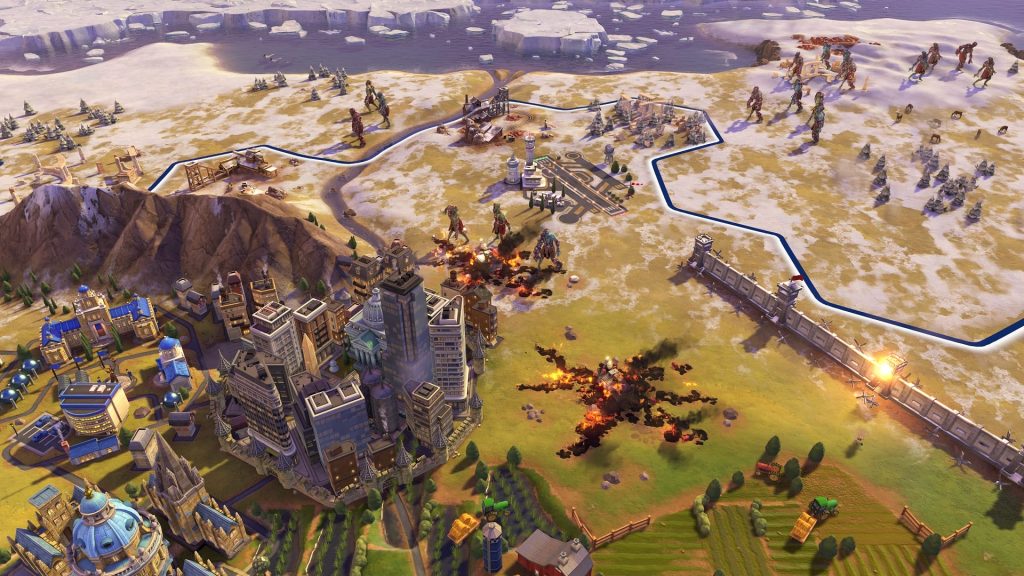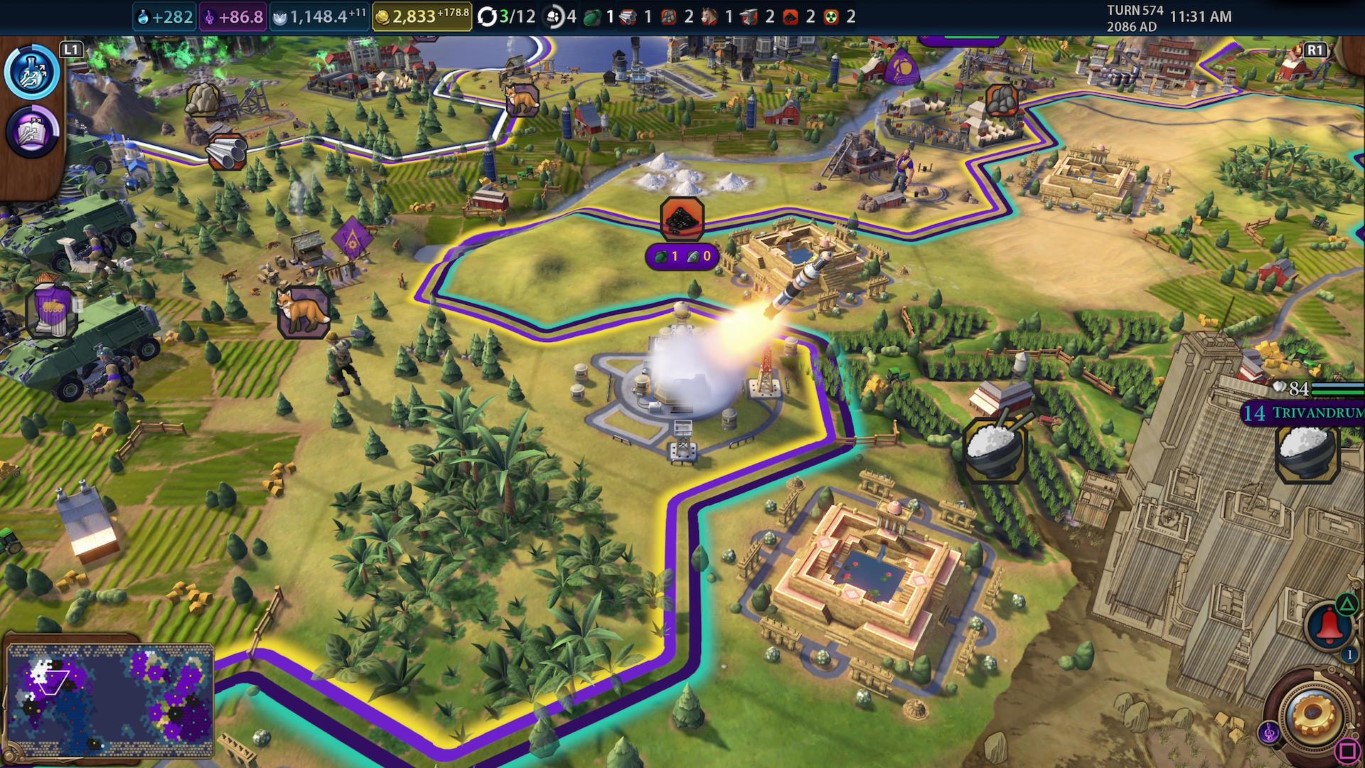Alright, let’s talk about one of my favorite parts of Civ 6: knowing exactly when to bring the pain. It’s not just about having the biggest army; it’s about timing, opportunity, and being smart with your aggression. Go to war too early, and you’ll wreck your own empire. Wait too long, and you’ll be staring down an enemy who’s already left you in the dust.
I’m going to share my personal guide on how to time your wars perfectly. We’ll break down the best moments to attack, from those wild early rushes to the massive late-game slugfests. Think of this as my playbook for making sure every war you fight is a decisive step toward winning the game, no matter which victory you’re aiming for.
The Ancient Era Gamble: My Guide to the Early Rush
The first few turns are pure chaos. Nobody’s borders are set, and a quick, sharp war can change everything. An early war is definitely a high-risk, high-reward play. But if you pull it off, you can knock out a neighbor, grab some prime real estate for yourself, and start a snowball that’ll carry you to victory.
Pinpointing the Golden Window for an Early Attack
This is a tight window. I’ve found the sweet spot is usually between turns 20 and 50 on standard speed. This is your chance to strike before cities get their ancient walls up, which makes taking them a whole lot harder. I’m always looking at my immediate neighbors, especially if they seem slow to build units or have settled in a spot that’s tough to defend.
Here are the signals I look for to launch an early war:
- Scouting Intel: My first scout is my most important unit, period. If I find a neighbor with a capital that’s barely defended, a settler just wandering around unprotected, or cities clustered together, I start seeing an opportunity.
- Unique Unit (UU) Advantage: If you’re playing a civ with a powerful unique unit in the Ancient or Classical era, you’ve got a built-in timer for war. Take the Aztecs. Their Eagle Warriors can capture enemy units and turn them into your own builders. That’s a massive incentive to get aggressive right away to boost your own growth. Sumeria’s War-Carts are another great example; they’re incredibly strong early and don’t need strategic resources, making them perfect for a fast, brutal attack.
- Resource Imbalance: If my starting location is loaded with hills and forests (hello, production!), and my neighbor is on flat, grassy land, I know I can out-produce them in units. That’s a clear green light.
- City-State Help: A militaristic city-state nearby can be your best friend. Levying their units can give your early army a huge boost and often be the thing that tips the scales in your favor.
How I Execute the Early Rush: A Step-by-Step
A successful early rush means you have to be completely focused. You’ll probably have to delay building up your cities in favor of pumping out units.
Let’s use a personal favorite of mine: The Roman Legion Rush.
Rome is fantastic for this because you get a free monument in your cities, and their Legions can build Roman Forts.
- My Initial Build Order: In my capital, I’ll start with a Scout, then a Slinger. After that, it’s all about producing Warriors. As soon as I research Archery, I upgrade those Slingers to Archers.
- My Tech and Civic Path: I make a beeline for the Craftsmanship civic to get the Agoge policy card. That gives a +50% production bonus to ancient and classical melee and ranged units—it’s essential. At the same time, I’m researching Mining and Bronze Working to find Iron for my Legions.
- My Army Makeup: My go-to early Roman army is about 3-4 Archers and 3-4 Warriors (which I’ll upgrade to Legions as soon as I can). This mix lets my Archers hammer the city defenses from a distance while my melee units soak up damage and go in for the final capture.
- The Attack: Once my army is ready, I march straight for my target. I try to place my Archers on hills or across a river for a defensive bonus and focus all their fire on the city center. My Warriors form a screen to protect them. Once the city’s health is low, I move my melee units in to take it. The key is to hit them with overwhelming force before they know what’s happening.

The Mid-Game Power Spike: Hitting Them Where It Hurts
The mid-game, from the Classical to the Industrial era, is all about power spikes. This is when new techs, civics, and especially your civilization’s unique units give you a temporary, but massive, military edge. Recognizing and using these moments is how you expand your empire and knock your rivals down a peg.
How I Spot My Mid-Game Power Spike
Your power spike is completely tied to the civ you’re playing. It’s that moment where everything your civilization is good at comes together, and you just have to go on the offensive.
- Unique Unit Timing: A lot of civs have a unique unit that practically screams “go to war now!” When I play as Macedonia, for instance, the combination of the Hypaspist and Hetairoi, boosted by Alexander’s abilities, makes the Classical and Medieval eras my prime time for conquest.
- Tech and Civic Breakthroughs: Some technologies are game-changers. The first person to get Niter and start fielding Musketmen has a huge advantage. Similarly, when I unlock the Nationalism civic, I can combine units into powerful Corps. That’s often a trigger for me to start a campaign.
- Bonus Synergies: I always look for ways my unique abilities, units, and government policies can work together. A great example is the Ottoman Empire. They have the powerful Janissary unique unit, and their leader, Ibrahim, can keep governors in conquered cities. This combo makes it easy to go on a long, sustained war without worrying as much about loyalty.
Building the War Machine: Fueling My Mid-Game Campaigns
A mid-game war is a much bigger deal than an early one. You need a solid economy, good production, and some careful planning.
- Dedicated Military Cities: I’ll usually pick a few of my cities to be my military production hubs. These are the ones with great production, and I’ll build Industrial Zones and Encampments with Barracks and Military Academies there.
- Economic Health: War is not cheap. I make sure I have a strong income to pay for unit maintenance and upgrades. Building Commercial Hubs and Harbors is a must. I also use internal trade routes to send production to my military cities.
- Securing Strategic Resources: I make sure I have a steady supply of Iron, Horses, and especially Niter long before I plan to attack. There’s nothing worse than unlocking an amazing new unit and realizing you don’t have the resources to build it.
Let’s look at one of my favorite plays: The English Redcoat Push.
When I play as England under Victoria, I’m really just waiting for the Industrial era. That’s when I get the Redcoat unique unit and the Sea Dog unique naval unit, creating a massive power spike.
- The Setup: During the Medieval and Renaissance eras, my focus is all on building up my economy and production. I establish a strong navy and try to get a city on another continent.
- My Tech and Civic Path: I prioritize getting to Military Science to unlock Redcoats and Square Rigging for Sea Dogs. I’m also working towards the Nationalism and Mobilization civics.
- The Power Spike: The moment I unlock Redcoats, my military power goes through the roof. These guys get a combat bonus on other continents and another bonus near the coast. This is my signal to start a global war.
- The Execution: I use my powerful navy, with my Sea Dogs leading the way, to control the oceans and ferry my Redcoat armies around the world. I target coastal cities first, where my Redcoats are at their strongest. My goal is to cripple my rivals by taking their rich coastal trading cities.
The Late-Game Juggernaut: Waging Modern War
Late-game war is a whole different beast. It’s about overwhelming firepower, using all your different unit types together, and projecting your power across the entire map. The element of surprise is mostly gone, but the stakes are higher than ever. A good late-game war can win you a Domination victory or stop someone else from winning.
My Calculus for Late-Game War
Declaring war in the late game is a big decision. Everyone has grievances, and the world is interconnected. But sometimes, a technological advantage gives you an opportunity you can’t pass up.
- Tech Asymmetry: The jump from a land army to an air force is one of the biggest power spikes in the game. If I’m the first player to have a large fleet of Bombers, I have a massive advantage. And of course, getting Giant Death Robots pretty much means an automatic win if you use them right.
- Strategic Resource Control: If I can corner the market on Oil and Uranium, I can basically disarm my opponents and leave them helpless against my modern army.
- Targeting Victory Conditions: In the late game, I’m often not fighting for more land. I’m fighting to stop someone else from winning. I’ll launch a precise strike to take a city with a Spaceport to stop a Science victory. Or, I’ll invade someone to steal their Great Works and slow down their Culture victory.
The Combined Arms Doctrine: How I Run My Late-Game Army
Late-game war is all about synergy. A diverse army that supports itself is way more effective than just a huge pile of the same unit.
- Air Superiority: Bombers are the key to my late-game attacks. They can wipe out enemy armies, destroy city defenses, and pillage districts from safety. I always build Fighters to protect my Bombers and control the skies.
- Naval Power: A modern navy, with Battleships and Aircraft Carriers, lets me fight anywhere in the world. Carriers are perfect for moving my air force across oceans, and Battleships provide amazing long-range bombardment.
- Ground Troops: Even with all that air and sea power, I still need boots on the ground to actually capture cities. Modern Armor and Mechanized Infantry are the core of my late-game army, and I always support them with Mobile SAMs to deal with enemy planes.

The Diplomatic Battlefield: Grievances, Loyalty, and War Weariness
In Civ 6, you’re not just fighting on the battlefield. You’re also fighting a diplomatic war. I’ve learned that managing Grievances, keeping my conquered cities loyal, and dealing with War Weariness are just as important as military tactics.
The Art of the Casus Belli: Justifying My Wars
Declaring a Surprise War makes everyone hate you and generates a ton of Grievances. I always try to use a Casus Belli, or a just cause for war, to reduce those penalties.
- Manufacturing Grievances: I can actually bait an opponent into giving me a reason to attack them. Settling a city right on their border, converting their cities to my religion, or making and breaking promises are all ways I can get them to generate Grievances against me, giving me a justification for war.
- Timing My Denouncement: Once I have a Casus Belli, I have to denounce my target and wait five turns before I can declare war. I use this time to move my armies right up to their border so I’m ready to strike the second the war starts.
The Unseen Enemy: Managing Loyalty and War Weariness
A long war can really hurt your empire. War Weariness lowers your Amenities, which can lead to unhappiness and rebels. And conquered cities will have loyalty problems and might try to flip back to their original owner.
- Winning Hearts and Minds: The first thing I do when I conquer a city is to move a Governor there to boost its Loyalty. I also leave a unit garrisoned in the city for another loyalty bonus. Policy cards like Praetorium and Colonial Offices are also a huge help.
- The Blitzkrieg Approach: The best way I’ve found to manage War Weariness is to win my wars fast. A quick, decisive victory means less time at war and fewer problems at home.
- Bread and Circuses: If War Weariness gets really high, I’ll run the Bread and Circuses project in my cities with Entertainment Complexes to boost my Amenities and keep my people happy.
War as a Tool: More Than Just Domination
Even when I’m not going for a Domination victory, I still use my military. A well-timed war can be a powerful tool for any victory condition.
- Science Victory: A quick military strike can capture an opponent’s city with a Spaceport, basically ending their race to the stars. I also use my army to secure key resources like Aluminum that I need for the space projects.
- Culture Victory: I can use war to get Great Works from my rivals by capturing their cities that have Museums and Wonders. A “liberation” war in the late game can also give me a big tourism bonus.
- Religious Victory: Declaring a Holy War lets me condemn enemy religious units with my military units, which is a much more effective way to spread my religion than just fighting theological battles.
Deciding when to go to war in Civ 6 is a tough call. It’s a mix of being ready for a fight, having a strong economy, and being smart about diplomacy. There’s no single “right” time to attack. Instead, I’ve learned to spot those brief windows of opportunity, those shifts in power, and those moments when a smart war can clear my path to victory. If you can master that timing, you’ll turn war from a simple tool of destruction into a surgeon’s scalpel, perfectly cutting out your rivals and carving your own way to glory.

